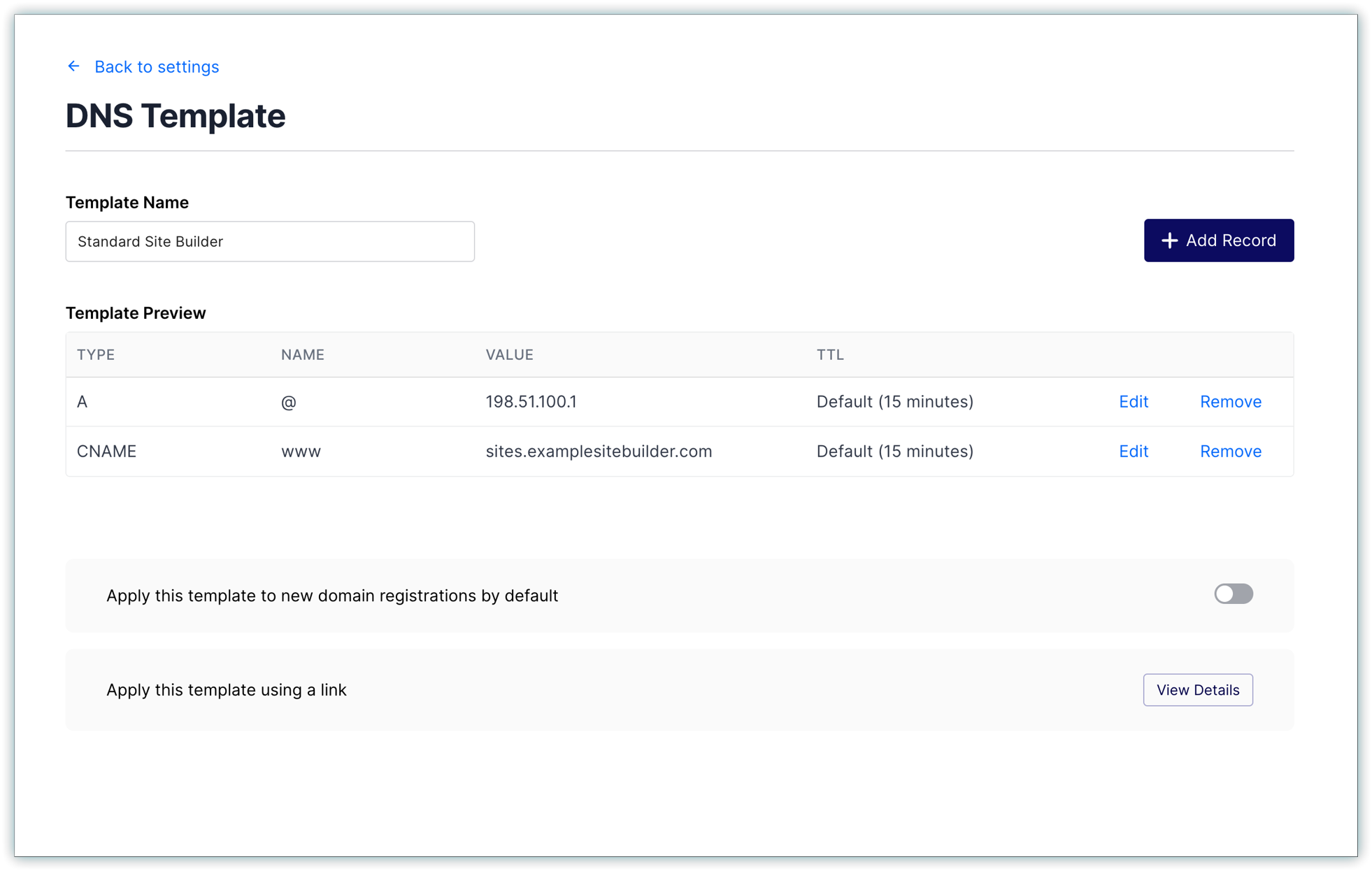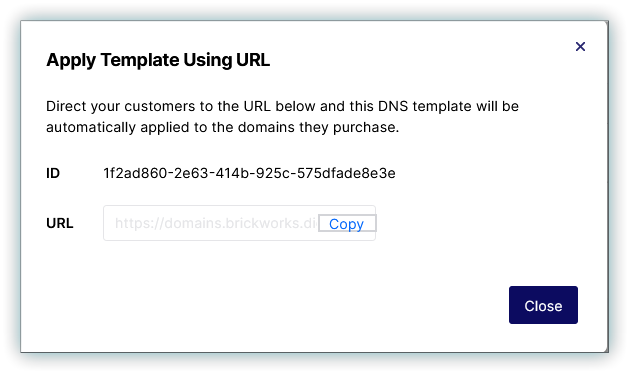Storefront’s DNS Templates and Query Strings allow resellers to automate customer DNS setup and keep internal systems aligned with Storefront records, creating a smoother onboarding and domain configuration process.
Query Strings allow a specific DNS Template to be applied on a per-domain basis, giving you as the reseller full control over DNS configuration automation.
Key Features
1. DNS Templates
DNS Templates offer support for multiple templates and enable the automatic application of DNS records for domain names registered through your Storefront.
2. Query Strings
Query Strings allow a specific DNS Template to be applied on a per-domain basis, giving you as the reseller full control over DNS configuration automation.
How It Works
This guide demonstrates how to set up a workflow where a customer is directed to your Storefront from your existing website or control panel. If you already know which service or services your customer uses, you can specify a DNS Template that will be applied once they complete their domain purchase on your Storefront.
Using Query Strings
A query string is a small piece of data encoded in a URL and parsed by Storefront. For DNS Templates, you can include the Template ID of any of your DNS Templates in the query string used to link your customer to Storefront.
Once a DNS Template is created, you can view the query string link in Storefront Manager.
Example Scenario
Imagine you offer two different services: a Standard Site Builder and an Advanced Site Builder with AI features. Each requires slightly different DNS records.
For the standard builder, you might require:
- An A record at the root
- A CNAME record at www pointing to your service
Here’s an example DNS Template for the “Standard Site Builder”. The Template Name provides a human-readable reference and appears in the Customer Control Panel if they choose to “reset DNS.”
To view the details of a DNS Template link:
- Go to Storefront Manager.
- Select View Details in the “Apply this template using a link” section.

- Copy the Template ID or the preconstructed URL containing the query string.

Example URL
https://www.exampledomains.com?dnstemplateid=7161d6b2-84cc-44df-93fc-69ef6c75bd9e
What Happens When the Link Is Used
When a user visits your Storefront using a URL with a DNS Template query string:
- Storefront parses the DNS Template ID and stores it in the user session.
- When the user completes a domain registration, Storefront automatically applies the corresponding DNS Template to the domain.
- The required DNS records are added automatically, allowing the domain to resolve to your service.
The assigned DNS Template is displayed on the Domain Details page for each domain. You can also add, change, or remove a DNS Template manually from the Storefront Manager if needed.
Session Behavior for DNS Templates
The DNS Template value remains active while the user is logged in on their device. If a user logs out after registering a domain, the DNS Template value is no longer stored.
If this occurs, the default DNS Template (if one is configured in your Storefront Manager) will be applied automatically to any new registrations.
The DNS Template value is also overridden if a user clicks another link on your site that submits a different DNS Template value. For example:
- A user clicks a link with DNS Template A.
- Later, they return to your site and click a link containing DNS Template B.
In this case, Template B will be applied when the user registers their next domain.
Each user session automatically expires after 7 days if not terminated earlier.
Adding an External User ID
You can include an External User ID in the query string, which Storefront parses and stores in the customer record within the Storefront database. This allows you to link customers from your system with customers in Storefront.
The External User ID value is displayed on the Customer Detail page and can be added, changed, or removed manually, just like a DNS Template.
Combining Query Strings
You can stack multiple query strings into a single URL to combine features. For example:
https://www.exampledomains.com?dnstemplateid=7161d6b2-84cc-44df-93fc-69ef6c75bd9e&extuserid=exampleuservalue
This example includes both a DNS Template ID and an External User ID, allowing for seamless automation of DNS setup and user linkage in one step.
Additional Resources
Was this article helpful? If not please submit a request here
How helpful was this article?
Thanks for your feedback!


